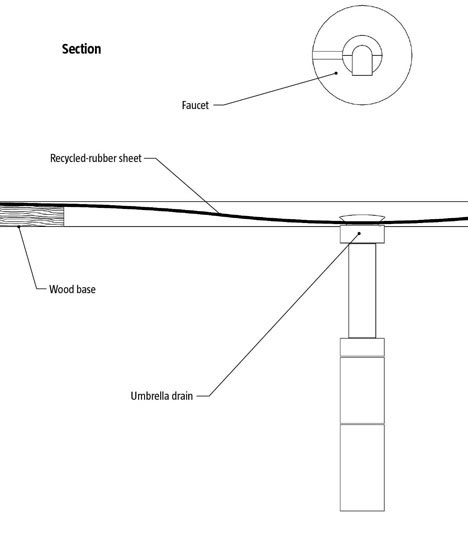 In the world of green products, worth is usually measured by a series of acronyms—VOCs, IAQ, FSC, etc.—or by percentage of recycled content, and even that is subdivided into categories: pre-consumer, postindustrial, and the most coveted, post-consumer. So it is refreshing to see RUBBiSH, which has a pedigree so pure that no acronyms are necessary. Our car-centric culture has left so many tires in the trash piles of the U.S. that the team at Santa Monica, Calif.–based architecture firm Minarc decided to turn them into something useful: bathroom sinks.
In the world of green products, worth is usually measured by a series of acronyms—VOCs, IAQ, FSC, etc.—or by percentage of recycled content, and even that is subdivided into categories: pre-consumer, postindustrial, and the most coveted, post-consumer. So it is refreshing to see RUBBiSH, which has a pedigree so pure that no acronyms are necessary. Our car-centric culture has left so many tires in the trash piles of the U.S. that the team at Santa Monica, Calif.–based architecture firm Minarc decided to turn them into something useful: bathroom sinks.The rubber from the tires is melted down and cleansed of debris, and the tiny inherent metal fibers that give a tire its road resistance are then formed into a sheet. This sheet is stretched over a base frame—made of wood, metal, or any other material out of which bathroom furniture can be fashioned—and anchored down by the drain collar.

This creates a shallow-sloped surface for water to be siphoned away, but not a clunky profile; in fact, the material used is so minimal that, the manufacturer claims, the sinks use less than one pound of rubber. Two options are available, the most basic being the 1/8-inch-thick sheet of rubber adhered directly to the cabinet underneath. The other is a framed option, in which the sheet of rubber is sandwiched between two sheets of aluminum around the edges. The firm is in the process of developing two standard sizes for commercial distribution: a single sink at 36 inches wide and a double basin measuring 5 feet across.
For juror Frank Barkow, the materials innovation was intriguing. “We’ve used these recycled tires [at Barkow Leibinger Architekten], but it usually comes in a plate material,” he said. “I’ve never seen it molded like this before.” But perhaps the most ringing endorsement came from juror Cristobal Correa, who said, “I want one in my bathroom.”



